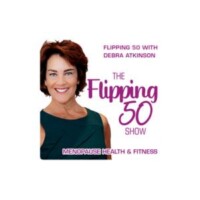7 Important Facts About Hormone Replacement Therapy and Breast Cancer
Hormone Replacement Therapy (HRT) is a treatment used to relieve symptoms of menopause by replenishing the estrogen, progesterone, and testosterone that the body stops producing as we age.
For women, HRT can significantly improve quality of life by reducing symptoms like hot flashes, night sweats, and vaginal dryness. For men, HRT can restore libido, improve mood, and boost muscle mass. However, there is a lot of confusion and debate when it comes to the relationship between HRT and breast cancer. Here’s are seven common myths about the connection between HRT and breast cancer that need debunking.
Myth 1: HRT Always Causes Breast Cancer
There’s a general belief that the use of HRT — for any duration, or in any amount — will inevitably lead to breast cancer. A big reason for this misconception is a 2002 study from the Women’s Health Initiative (WHI) that claimed HRT increased the risk of breast cancer, stroke, and blood clots and terrified a generation of women seeking hormonal support. Over the years, experts have criticized this study for overexaggerating risks and over relying on observational research.
The risk of HRT causing breast cancer is influenced by a variety of factors including the type of HRT, duration, and individual risk factors, like environment. Even then, most research finds that HRT increases the risk of breast cancer only slightly. In May 2024, a reevaluation of the data from the 2002 WHI study stated that the benefits of hormone therapy outweigh the risks.
Myth 2: Estrogen-Only HRT Is Completely Safe
One of the main factors that influences the risk of developing breast cancer from HRT is the use of HRT that combines estrogen and progesterone. While it’s not fully understood why combined HRT comes with a higher associated cancer risk, these are the results most commonly found in research. At the same time, that doesn’t mean that estrogen-only HRT is 100% safe. This is another myth. Estrogen-only HRT also comes with a risk of developing breast cancer, particularly when used long-term, but the risk is lower than with combined HRT.
Myth 3: All Types of HRT Are Equally Risky
Another common assumption about HRT is that every form of the therapy—including estrogen-only, and combined estrogen and progesterone therapies—carries the same risk of breast cancer. Research shows that isn’t true.
While both varieties of hormone replacement therapy increase the risk of developing cancer, especially the longer a person uses HRT, forms of HRT that combines progesterone and estrogen have a higher associated risk of breast cancer than estrogen-only therapies.
While not completely understood, studies suggest that certain synthetic progestins used in combined HRT formulations may be the culprit.
Myth 4: The Risk of Breast Cancer from HRT Is Permanent
Those interested in trying HRT are often offput by the myth that breast cancer associated with HRT risk remains elevated even after ceasing hormone therapy. In other words, many people worry that even using HRT for a short period of time can lead to serious disease down the road, and that stops them from trying the therapy at all.
Scientific study shows this likely isn’t true. Once someone stops taking HRT, their risk of developing breast cancer gradually decreases. In this 2014 study, researchers found that if a person had been taking HRT for less than 5 years, associated excess risk of breast cancer “disappears during the 5-year period after treatment stops.” When it came to those who’d been on HRT for longer than 5 years, the potential impact to cancer risk is less understood.
Myth 5: HRT Users Cannot Undergo Regular Breast Cancer Screening
Another misconception is that HRT users cannot be screened for breast cancer. Sure enough, HRT can cause denser breast tissue and false positive mammograms, but that doesn’t mean that HRT users can’t be screened at all. While HRT can make breast cancer screenings more challenging, additional methods have been developed to ensure people taking HRT can access the preventative care and peace of mind they need.
For one, doctors may recommend stopping HRT for one to two months before your mammogram to create the best possible conditions for a screening. They also may recommend more frequent mammograms and at-home exams to ensure any breast changes are caught early. There is also more sensitive and advanced technology available for breast imaging like MRIs, which, in conjunction with mammograms, can still offer doctors a solid understanding of breast health in an HRT user.
Myth 6: HRT Is Not Safe for Women with a Family History of Breast Cancer
Some are reticent about trying HRT because they have breast cancer in their family and they’ve been told that, in that case, they should avoid the treatment altogether. Evidence in this case is mixed and doesn’t necessarily back this conclusion up.
According to a reanalysis of the data from that 2002 Women’s Health Initiative randomized trial that looked at over 16,600 menopausal women, “Family history and estrogen plus progesterone replacement therapy have independent and noninteracting effects on the risk of invasive breast cancer.”
The truth is some women experiencing severe symptoms of hormonal imbalance can benefit greatly from using HRT, and may do so without developing cancer by staying vigilant about monitoring their breast health with their medical care team.
Myth 7: Traditional HRT is Better Than Bioidentical HRT
There are different types of hormone replacement therapy—traditional and bioidentical. Traditional HRT is made from the urine from pregnant horses and hormones synthesized in labs. Bioidentical HRT (HRT) is composed of hormones from natural sources that are chemically identical to hormones your body naturally produces.
There is much debate over whether traditional HRT or bioidentical HRT is the safer and more effective option. Experts have found that the risks associated with both are similar, and because HRT can be compounded to a patient’s individual needs, some find HRT to be more effective than traditional methods. That said, neither form of HRT is completely risk-free and more scientific study is needed to completely understand the effects of HRT on the body.
Find Relief through Dependable Sources
In the end, whether you’re seeking hormonal support during menopause or at another stage of life, it’s always a good idea to understand the risks—and myths—involved with trying hormone replacement therapy.
When seeking more information about hormone therapy and how it might impact your risk of breast cancer, it’s best to consult with your healthcare provider for personalized information, and credible, recent, and peer-reviewed scientific research.
By relying on the support of your doctor and information from other reputable sources you may achieve hormonal balance and symptom relief without excessive risk to your long-term health. Find an EvexiPEL provider near you today!









comments
Add comment